Welcome to the final part of a four-part series in which I’ve delved into the NHL’s best forward lines, the league’s worst forward lines, and several of the best defensive pairings during the 2021-22 season. Like with the other articles, the only objective criteria that must be met in order to merit consideration is a time-on-ice threshold. For defensive pairs, that minimum is set at 300 minutes played together at 5v5 this season. Otherwise, both traditional box score metrics and advanced statistics are used to choose the names for this list. Now, let’s look at five of the NHL’s worst defensive pairings this season, with an additional five honourable mentions rounding out the field.
Montreal Canadiens: Ben Chiarot and David Savard
The first entry for this season’s worst defensive pairs comes from the Montreal Canadiens. Given that the team sits last in the Atlantic Division and 31st out of 32 teams overall, it’s no surprise that one of their pairs has struggled to this extent. According to our 2022 NHL Trade Deadline Big Board, the bruising Ben Chiarot figures to be one of the most sought-after players available, although that designation doesn’t appear to be borne out in his on-ice results. It should be noted that since David Savard was placed on the Injured Reserve in early February, Chiarot’s primary partner has become Jeff Petry. Still, he’s accumulated a large enough sample beside Savard to warrant his place on this list.
Among 73 qualified pairs, Chiarot-Savard ranks 72nd in expected goals share (39.8% xGF%), and their offensive and defensive splits illustrate a pair that struggled to keep the puck out of their zone. Quality opportunities were in short supply going forward (66th in expected goals for per-60-minutes) while flailing in their own end (72nd in expected goals against per-60). Their tally of actual goals is even more unforgiving, with the two being outscored 16-9 at even strength. It’s unfair to read too much into the goal count when Montreal’s goaltending has been abysmal, but their play hasn’t been pretty no matter how you approach it.
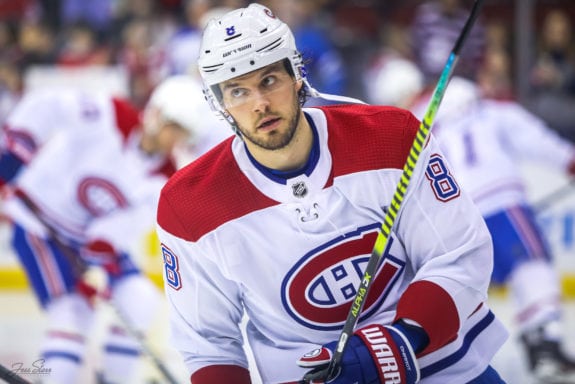
Expecting the promising, but still green, Nick Suzuki to seamlessly replicate the defensive impact produced by the departed Philipp Danualt is foolish, but it’s clear how much the shutdown center’s absence has dragged the team down at even strength. Not to mention, but the debilitating injuries that have retired Shea Weber (Chiarot’s most common partner last season) have similarly rid the Canadiens of their most reliable pairing. Together, the bruising duo compiled a 51% share of scoring chances (SCF%) and a respectable 50.3% xGF%. When played apart, Weber posted stronger numbers without Chiarot compared to the inverse, with Chiarot benefitting more from the on-ice relationship.
Related: Montreal Canadiens Trade Deadline History
The extent to which the Canadiens’ roster was reshuffled meant that a turbulent period of adjustment was inevitable. What’s become clear is that Chiarot is not a top-pairing defender, and I don’t say that disparagingly. His results with Petry paint a much more favourable picture as the two control a more respectable 47% of xGF and rank 29th in xGF/60. Still, the same phenomenon exists where Petry posts much better results away from Chiarot which lends credence to the thought that he shouldn’t be utilized in his current spot.
Could he thrive in a more sheltered role where he isn’t trotted out against elite competition every night? Most likely, but the rampant trade speculation centered around a first-round pick inflates his value beyond anything resembling a reasonable suggestion. Stranger things have happened, though.
Buffalo Sabres: Robert Hagg and Mark Pysyk
As is the case with most top pairs on floundering teams, it’s difficult to pin too much of the blame on any of the Buffalo Sabres‘ defensive pairings given the shortage of legitimate supporting pieces in their orbit. I’ve given the all-Nordic duo of Rasmus Dahlin and Henri Jokiharju a pass as they face the most difficult competition by percentage of ice-time spent against opposing team’s three most used forwards. Instead, I’ve pinpointed the pair of Robert Hagg and Mark Pysyk as a more deserving target of scorn.
They play much easier minutes but their on-ice results only improve incrementally compared to the top pair. Among the team’s five defensive pairings with at least 150 minutes played at 5v5, Hagg-Pysyk generates the lowest quality of scoring chances (71st leaguewide), and their 43.5% stake of xGF is only slightly better at 65th.
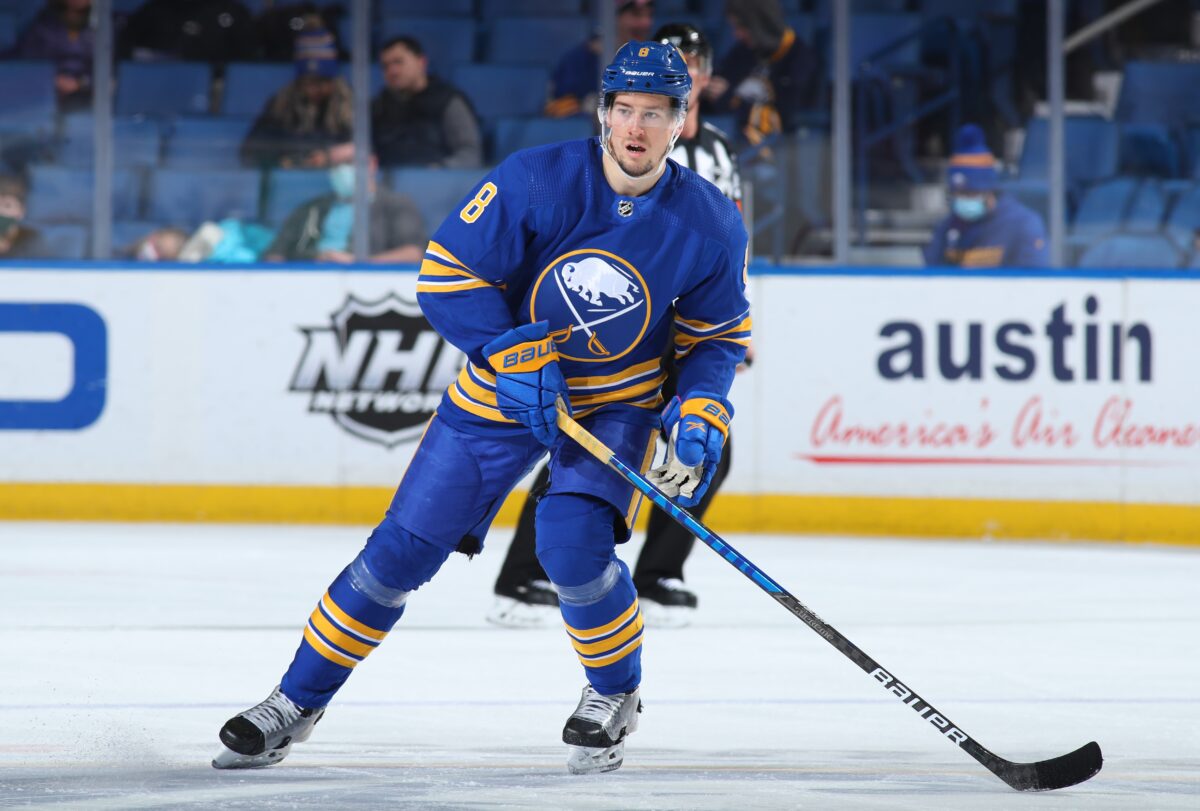
So what gives? Pysyk concedes both high rates of zone entries against as well as those directly leading to a scoring chance. Hagg also offers onrushers unmitigated admission into the defensive zone, but protects the front of the net well. For the latter in particular, moving the puck out of the zone proves challenging. According to Corey Sznajder’s tracking data, Hagg ranks fourth-last in the number of puck retrievals that lead to a clean zone exit (with possession) while failing to leave the zone at the fifth-highest rate this season. Apply a bit of forechecking pressure to him and he crumbles. Their very low xGF rate makes sense since it’s impossible to create offense when you never leave the zone.
The eventual introduction of top NHL prospect Owen Power should significantly bolster Buffalo’s defense corps with a blueliner better capable of controlling play at the highest level. The long-tortured organization hasn’t crawled out of the darkness just yet, but a brighter future beckons on the horizon.
Chicago Blackhawks: Jake McCabe and Connor Murphy
It was always going to be a trying season for the Chicago Blackhawks, a franchise in the midst of a turbulent transition between competitive timelines defined by gradually declining stars still on the roster. For the team’s most commonly used pairing of Jake McCabe and Connor Murphy, their issues lie in not having neutral zone support rather than relinquishing a high number of chances against (26th in xGA/60).
Related: Blackhawks Receiving Calls About Patrick Kane’s Availability
They’ve posted the lowest rate of xGF/60 this season (1.49) and the chasm between the next lowest pair is notably wide. With Calvin De Haan and Seth Jones on the ice, the Blackhawks have generated 1.8 xGF/60 and the resulting difference of 0.31 xGF/60 is identical to the gap between second- and 10th-last. While most of Chicago’s forwards are above-average at carrying the puck into the offensive zone, they fail to create many scoring chances in the aftermath.
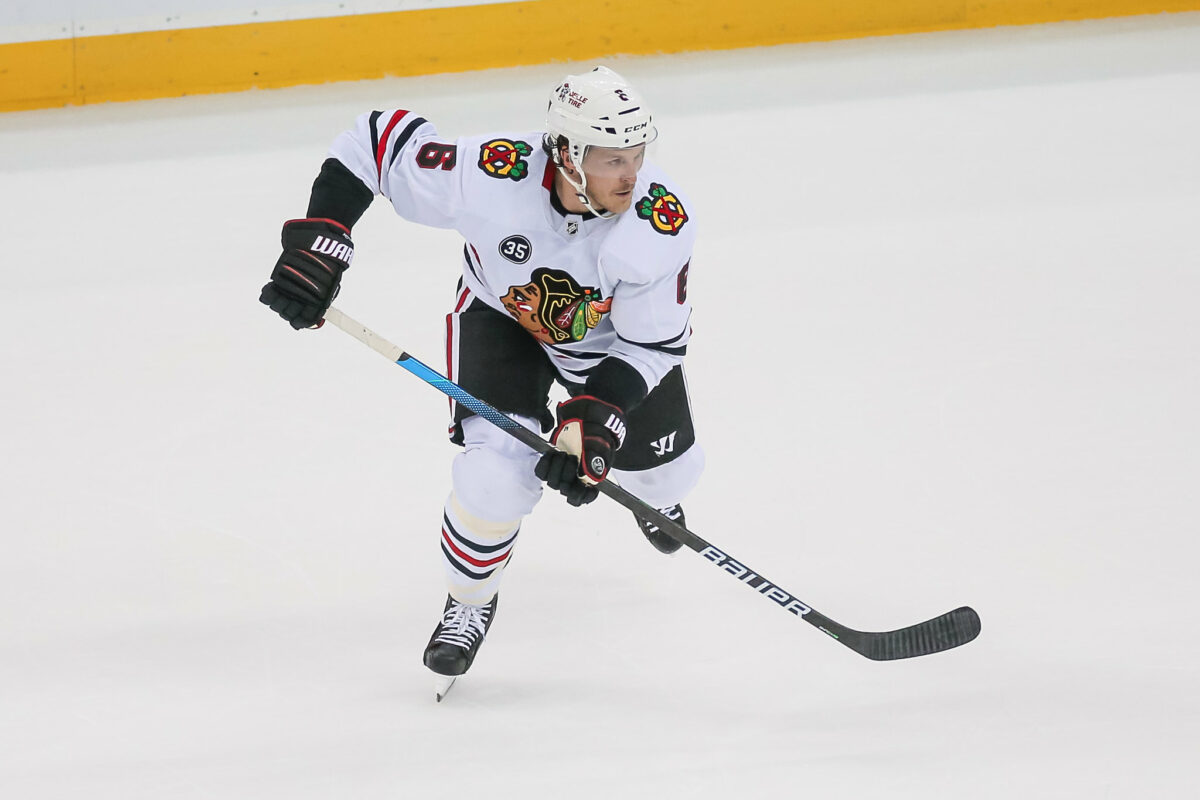
It appears as though the pair tries to play low-event hockey, but their third-worst xGF share (39.9%) suggests that of the few chances that are generated when they’re on the ice, most are heading towards their net. Murphy in particular gives up a chunk of zone entries and doesn’t do a particularly effective job of getting loose pucks out of his own end.
It comes as no surprise then that the pair fares the worst when it comes to their differential of actual goals. They own the lowest goals share among qualified pair (just over 25%) and allow the highest rate of goals against per-60-minutes (4.08). Part of it is down to Chicago’s poor goaltending this season (28th in team save percentage), but when the results are that bad, it can’t all be pinned on the netminders.
Arizona Coyotes: Shayne Gostisbehere and Dysin Mayo
Even for an inept team like the Arizona Coyotes, someone has to shoulder a majority of the workload. For much of this season, the organization’s fortunate prizewinners have been Shayne Gostisbehere and rookie blueliner Dysin Mayo. Unsurprisingly, they’ve floundered while occupying roles outside of their usual comfort zone, and contributed to the franchise’s eyesore of a record. In 593 even-strength minutes, the pair accounts for 41.4% of xGF (69th), 40.1% of unblocked shot attempts (73rd) and 49.1% of actual goals (45th). If not for the pair receiving unusually strong goaltending (.923 5v5 save percentage) compared to the team’s .908 SV% mark, their goal share likely craters as well.
Looking at the tracking numbers, Mayo emerges as the player on this pair to target for the purposes of reliably creating opportunities. Neither of the two are adept at zone entry prevention, which gives opponents the time and space to set up their offensive schemes, but Gostisbehere is better equipped to transition the puck out of danger. When it comes to retrieving the puck and exiting the zone, Mayo grades out as one of the league’s worst while his partner is on the opposite side of the spectrum.
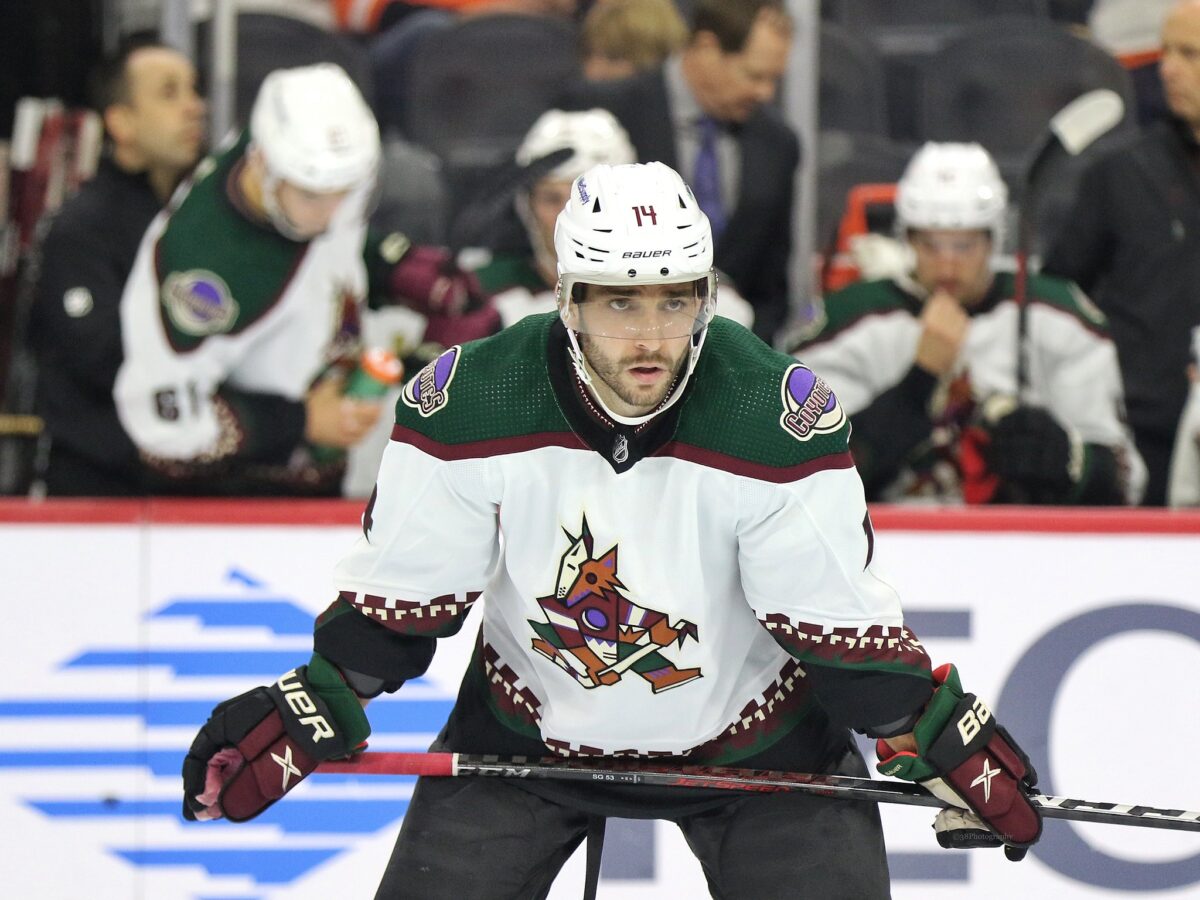
Again, it’s tough to objectively evaluate the two without considering the context. One look at the Coyotes’ salary books and overall roster construction offers a clear explanation for their ineptitude. They are firmly in rebuilding mode, putting their faith in the draft lottery to deliver potential franchise saviours in one of Shane Wright, Conor Bedard, or Matvei Michkov from the 2022 and 2023 drafts. Someone has to be the scapegoat for the despair and drudgery that comes with a last-place finish, and this pair bears the brunt of said thankless task.
Seattle Kraken: Vince Dunn and Adam Larsson
On the surface, the Seattle Kraken‘s most-used pair resembles a competent unit comprised of two players with contrasting, but complementary, styles. In practice, Vince Dunn and Adam Larsson haven’t been inspiring at either end, struggling to fend off opposing attacks while driving little to no offence in response. They rank slightly below average in terms of the quality of chances they concede (44th out of 73 pairs), but aren’t directing the puck towards the opposition’s net at a consistent rate either (70th in xGF/60).
Related: Kraken Prospect Report: Daccord, Melanson, Winterton & More
Although it’s Dunn who carries a reputation of being an offensively-inclined blueliner with a tendency miss defensive assignments, it’s his partner who has stumbled in that department this season. Among all Kraken defenders, Larsson concedes the highest rate of zone entries which lead to a scoring chance against (4.8 per-60). Dunn is Seattle’s best rearguard in terms of facilitating a high volume of zone entries and exits, but his prowess in transition doesn’t make up for how the pair readily concedes high quality looks. The duo has also watched opposing forwards ripple the twine often this season, allowing the second-highest per-60 rate of GA/60 among qualified pairs.
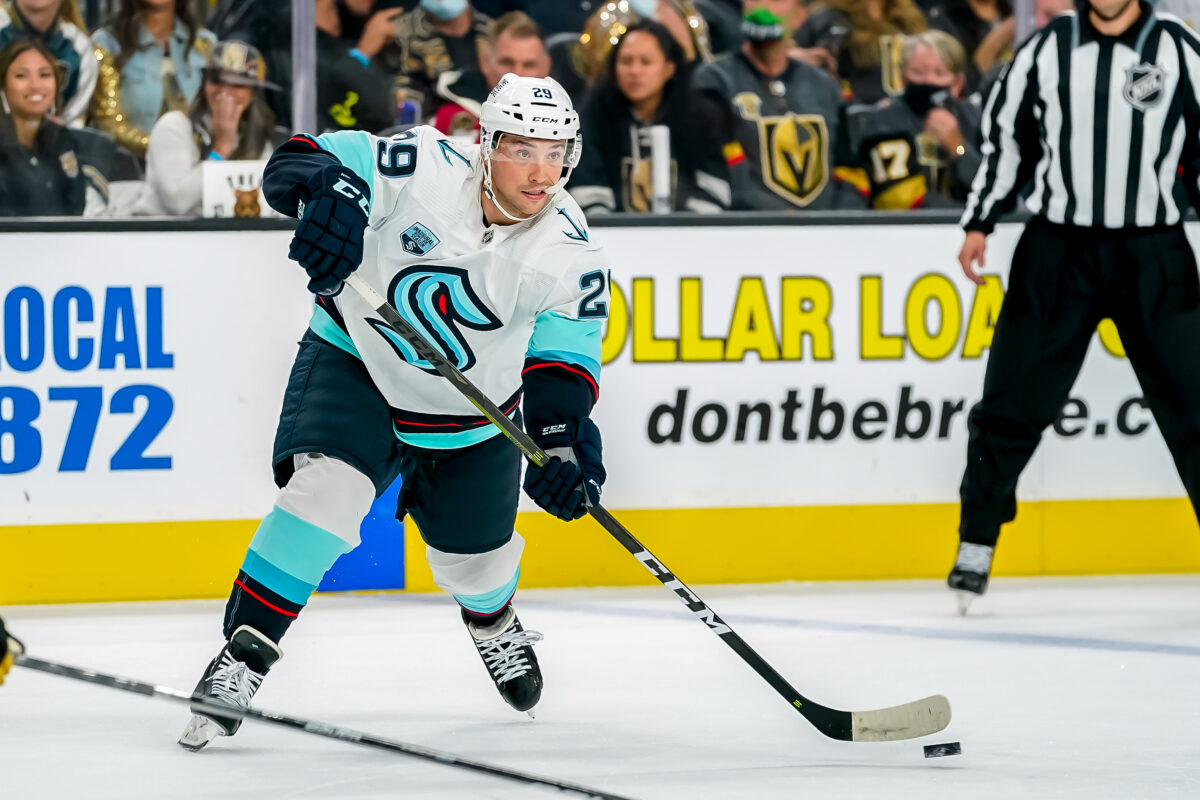
The pair’s defensive misgivings could be masked if the franchise’s goaltending had exceeded or even met the expectations dictated by their cap commitment to those occupying the position. Using goals saved above expected (GSAx) to account for differences in the quality of chances faced paints a grim portrait of the state of Seattle’s netminding. MoneyPuck estimates that both Philipp Grubauer (last with -30.2 GSAx) and Chris Driedger (-6.3 GSAx) have significantly underperformed relative to their workload. When the last line of defence is as porous as those two have been, even Nicklas Lidstrom isn’t going to look competent in his own end.
Seattle’s shallow offensive talent pool combined with surprising ineptitude in net is responsible for the pair’s low share of goals at even strength (fifth-last with 36.4%), and those trends define the team’s inaugural NHL season. It’s difficult to envision the Kraken’s goaltending performing this poorly once again this season and a few more stops make the organziation’s short-term outlook a little more optimistic. Always remember, goalies are voodoo and be glad that you’re not the one tasked with figuring out which ones are worth tying down financially.
NHL Defensive Pairs Are Hard To Nail Down
What’s been evident throughout this series is that finding a pair of defensemen who complement each other’s strengths and weaknesses while being able to handle a certain level of competition is rare. It’s also true that the level of support a pair receives from its forwards and goaltenders can alter public perception of their competence. It’s easy to skim the surface-level results (such as goals against) and immediately condemn a player, but that might be missing the point.
To round out this series, I’ve included an additional five pairs who have either been on the receiving end of an inordinate number of goals against, scoring chances, or both, compared to their positional peers. Let me know if there is anyone that I’ve missed in the comments!
Dishonourable Mentions: Calvin De Haan and Seth Jones (Chicago Blackhawks); Vladislav Gavrikov and Andrew Peeke (Columbus Blue Jackets); Esa Lindell and John Klingberg (Dallas Stars); Nick Leddy and Filip Hronek (Detroit Red Wings); K’Andre Miller and Jacob Trouba (New York Rangers)
Data courtesy of All Three Zones, Hockey Reference, MoneyPuck, and Natural Stat Trick. Statistics are accurate as of March 6th.